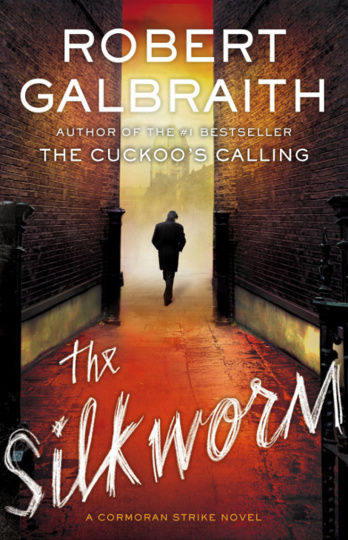The Silkworm by Robert Galbraith
- NZ Booklovers

- Dec 19, 2017
- 3 min read

Cormoran Strike, private detective and new serial character created by Robert Galbraith – aka J.K. Rowling – is back this month in the second book of the series, The Silkworm.
In The Silkworm Strike is hired by Leonora Quine to investigate the disappearance of her husband, “has-been” author Owen Quine. Although a seemingly unsuitable case for Strike – who, since solving the infamous Lula Landry case in The Cuckoos Calling, has been hand picking his well-heeled clientele – he starts trying to track down Quine’s whereabouts, and on his way meets a host of eccentric and dubious characters.
Quine’s disappearance coincides with the completion of his latest book, “Bombyx Mori” (Latin for “The Silkworm”) – a thinly disguised attack on just about everyone Quine knows, which is creating upheaval in the London literary scene. When Strike discovers the grisly remains of Quine’s body in a seemingly brutal and ritualistic murder, he has to find the murderer to keep an innocent woman out of jail.
The narrative of The Silkworm meanders along somewhat until the discovery of the body, and a fair amount of time is taken up by the author “filling in” the background and history of Strike for new readers of the series. The hard thing about serial novels is that there is always an inevitable point of comparison – for The Silkworm such a comparison could be considered especially grueling, considering the high praise and accolades bestowed on Rowling’s first foray into crime writing. The second book in what Rowling seems to be intending to be a substantial series, unfortunately, suffers from a general slowness in plot, and a seeming lethargy around the portrayal of the protagonist, Strike. The characteristics of Strike, which, in The Cuckoos Calling, were intriguing and endearing, in The Silkworm feel slightly irritating and depressing.
There is also a noticeable lack of presence of Strike’s side-kick/personal assistant, Robin, whose presence in The Cuckoo’s Calling enlivened the narrative and added some great tension to Strike’s characterisation. It is not until the end of The Silkworm that this aspect of their relationship is portrayed to its full effect.
As in all her novels, the strength of Rowling’s writing lies in the minute, detailed and exacting descriptions of places and people. In The Silkworm the literary London scene is an extremely atmospheric, believable place of “great heights” – for characters like acclaimed author Michael Fancourt, who holidays in Europe and frequents the trendy “Groucho Club”– or “great lows” – for would-be authors like character Kathryn Kent, who lives in a council estate with the obligatory graffiti and menacing youth gangs.
Reading the precise description of this literary world one can’t help thinking that Rowling could be making a few expert digs at the world that she herself inhabits. Like Quine’s cryptic assault on his literary circle, Rowling has managed to paint a picture of an elite, incestuous and corrupt scene inhabited by suspect characters. This is best summed up by Fancourt’s character, who states: “Writers are a savage breed Mr Strike. If you want life-long friendship and camaraderie, join the army and learn to kill. If you want a lifetime of temporary alliances with peers who will glory in your every failure, write novels.”
Regardless of meanderings and repetitions, Rowling’s skillful depiction of this world – in which both Strike and the reader are visitors to the somewhat disturbing milieu – will keep the attention of those who have read and enjoyed The Cuckoos Calling, and is also sure to create new fans of the series who will be eagerly anticipating the next instalment of the Cormoran Strike series.
REVIEWER: Tanya Allport
TITLE: The Silkworm
AUTHOR(S): Robert Galbraith
PUBLISHER: Hachette
RRP: $37.99



